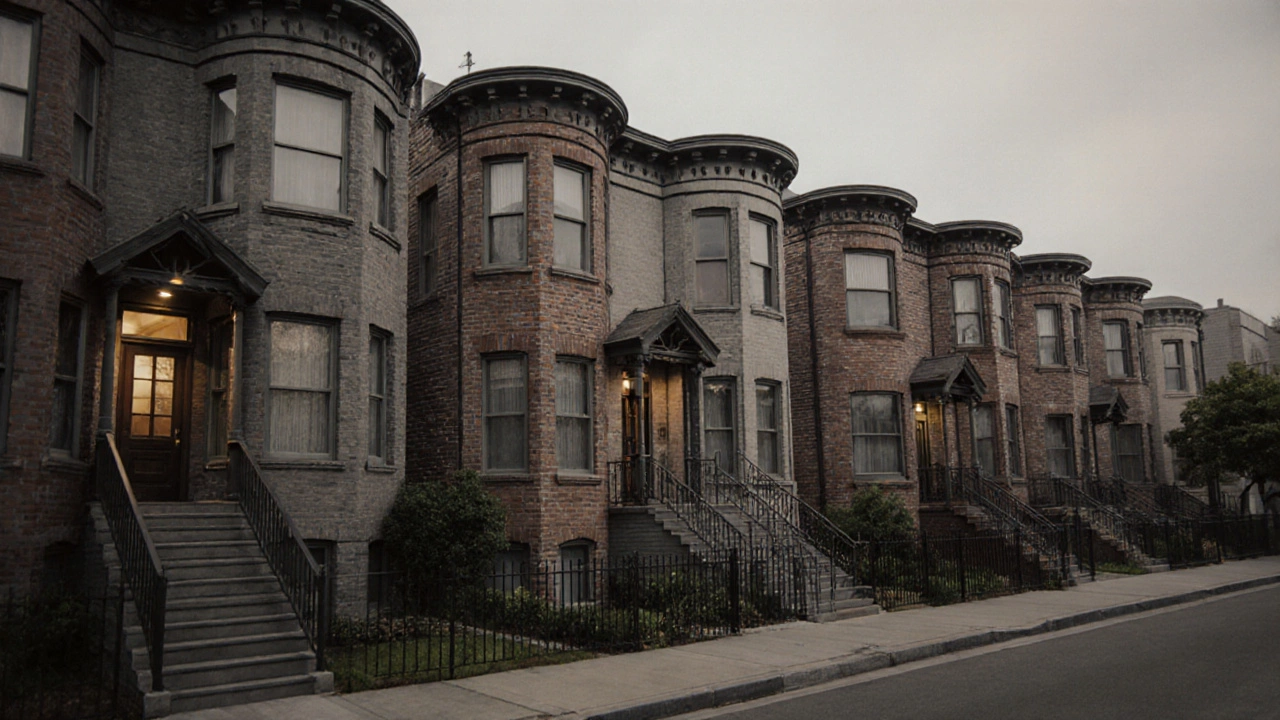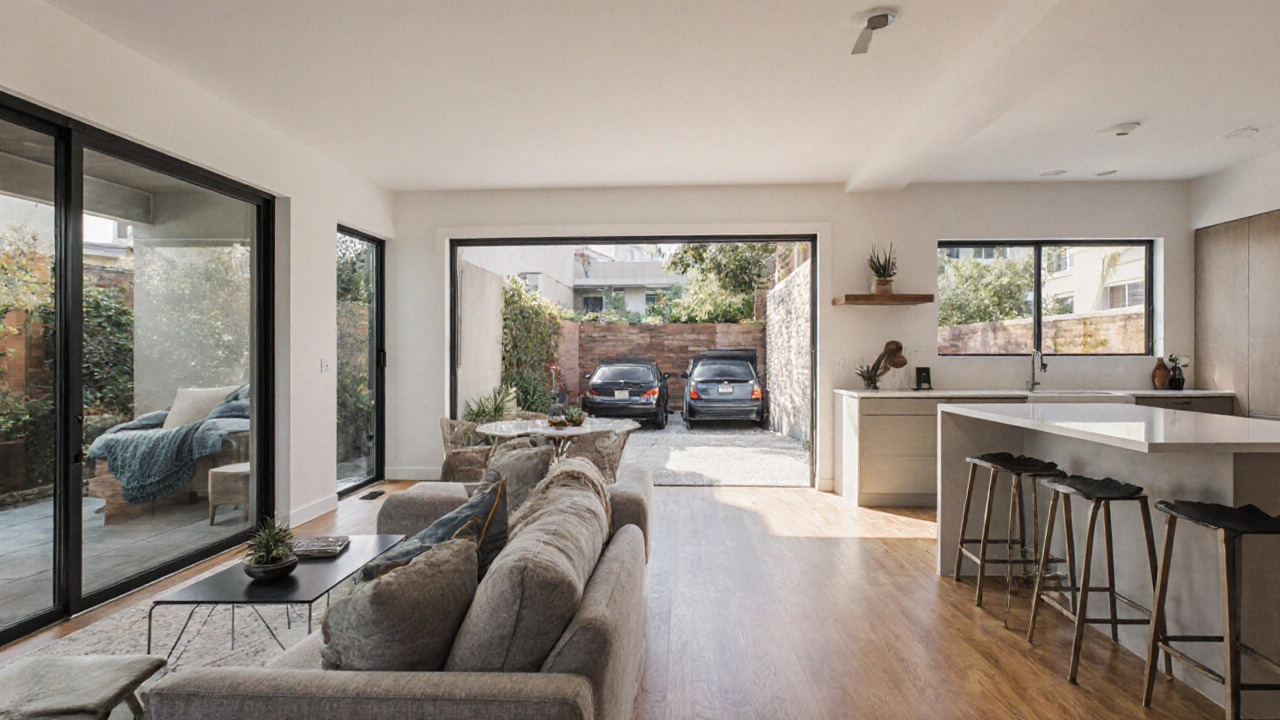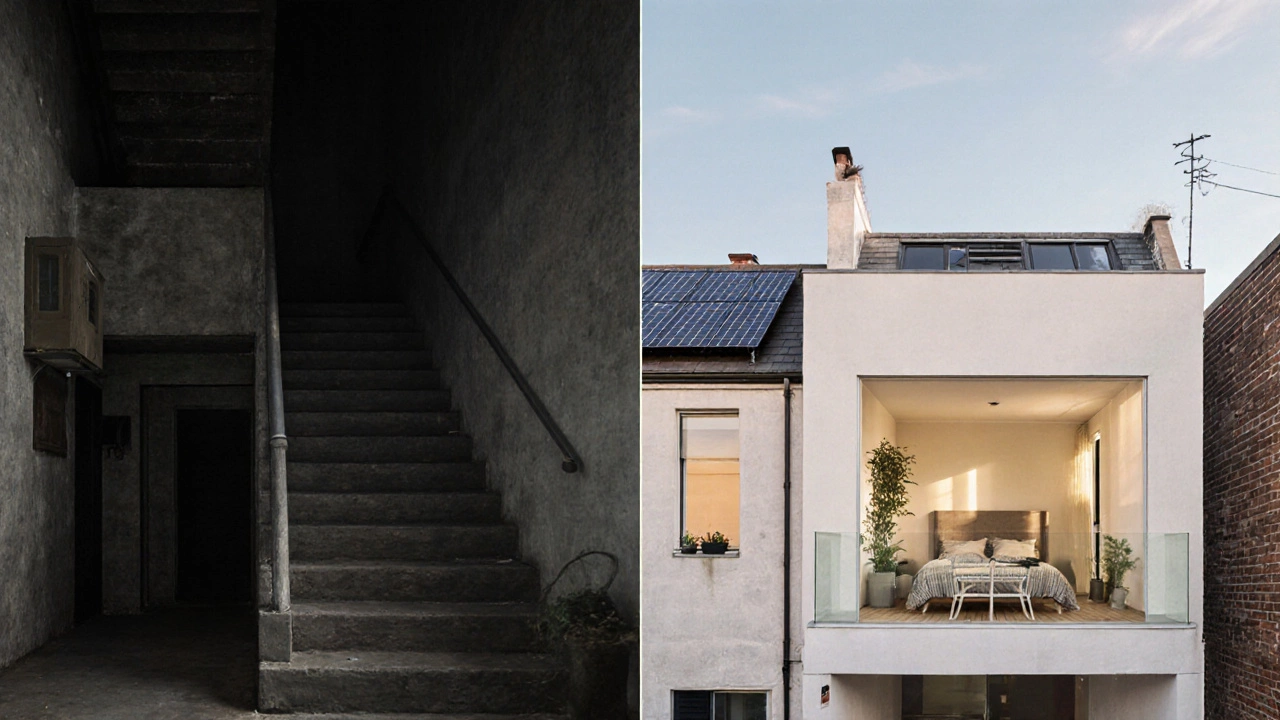What Is the Difference Between a Townhouse and a Townhome?

Nov, 17 2025
Townhouse vs Townhome Decision Tool
This tool helps you determine which property type better matches your needs based on key differences discussed in the article. Answer the questions below to get a personalized recommendation.
Your Priorities
Budget & Fees
Priority 1Space & Layout
Priority 2Family Needs
Priority 3Maintenance & Rules
Priority 4Comparison Results
| Feature | Townhouse | Townhome |
|---|---|---|
| Ownership | Often structure only | Usually land + structure |
| HOA Fees | Higher ($500+ monthly) | Lower ($200-$400 monthly) |
| Layout | Narrow, multi-level | Open, modern, more space |
| Sound Insulation | Often thin walls | Better noise reduction |
| Outdoor Space | Limited or shared | Private patio/backyard common |
| Resale Value | Slower appreciation | Higher appreciation |
Get Your Recommendation
Click 'Calculate' to see which property type best matches your priorities.
People often use the words townhouse and townhome like they mean the same thing. And in many cases, they do. But if you’re shopping for a home-especially in places like Los Angeles where space is tight and prices are high-knowing the real difference can save you from a bad purchase, a surprise HOA fee, or a layout that doesn’t fit your life.
It’s Mostly About Style, Not Structure
There’s no official government rule that says a townhouse is different from a townhome. In fact, in most real estate listings, they’re used interchangeably. But if you dig into how builders, architects, and longtime residents talk about them, you’ll find a subtle but important distinction.A townhouse is typically a multi-story home that shares one or two walls with neighbors. It’s often part of a row of similar homes, with each unit stretching vertically-two or three floors high. You might walk up from the front door to the living room, then up again to the bedrooms. The key is that it feels like a narrow, tall house that just happens to be attached.
A townhome, on the other hand, is usually built to feel more like a single-family home. It’s still attached to neighbors, but the design prioritizes open floor plans, wider layouts, and sometimes even private outdoor space like a small patio or backyard. Many modern townhomes in Southern California have two-car garages at ground level, with living areas above. They’re built for comfort, not just density.
Think of it this way: a townhouse is a house that got squeezed into a row. A townhome is a single-family home that was designed to share a wall to save space.
Ownership and HOA Rules Can Be Very Different
This is where the confusion gets expensive.In many older neighborhoods, especially in cities like Pasadena or Long Beach, a townhouse might come with a homeowners association (HOA) that handles everything: roof repairs, exterior painting, landscaping, even snow removal (yes, it happens in the San Gabriel Valley sometimes). You own the land your home sits on-but the HOA controls what you can do with the outside. No bright red shutters. No fence taller than three feet. No putting up a shed.
A townhome built after 2010, especially in newer developments like those in Irvine or Valencia, often comes with a different setup. You might own the land under your unit and the structure above it. The HOA might only cover shared areas like the pool, walking paths, or common entryways. You’re free to paint your front door any color you want, install solar panels, or add a small deck. That’s because modern townhomes are often classified as single-family detached dwellings under local zoning laws-even though they’re physically attached.
Check the CC&Rs (Covenants, Conditions & Restrictions) before you sign anything. In some cases, a townhouse can cost you $600 a month in HOA fees. A townhome in the same neighborhood might only charge $250. The difference isn’t magic-it’s in how the property is structured and what’s included.
Layouts and Living Space Aren’t the Same
If you’ve ever walked into an older townhouse in downtown LA, you know what I mean. Narrow staircases. Low ceilings. A kitchen that’s basically a closet. These homes were built in the 1950s and 60s to fit as many units as possible on a block. They’re efficient, but not comfortable.Modern townhomes? They’re built for how people live today. Open kitchens that flow into living areas. High ceilings (9 to 10 feet). Walk-in closets. Main-floor master bedrooms. Some even have rooftop terraces.
Take a look at a 2023 development like The Grove at Northridge. Each townhome is 1,800 to 2,200 square feet, with three bedrooms, a two-car garage, and a private courtyard. The townhouses built next to them in the 1980s? 1,200 square feet, no garage, shared driveway, and a basement that’s really just a crawl space.
Size isn’t everything-but when you’re spending $800,000, you want to know if you’re getting a house that fits your life, or just a box with a roof.

Price and Resale Value Depend on the Label
In 2025, a townhouse in a historic LA neighborhood might sell for $720,000. A townhome of similar square footage in a newer community nearby? $890,000. Why the gap?It’s not just location. It’s perception. Buyers today look for homes that feel private, spacious, and low-maintenance. A townhome checks those boxes. A townhouse? It feels more like an apartment with a front door.
Resale value follows suit. A 2018 study by the Urban Land Institute found that townhomes in Southern California appreciated 12% faster over five years than traditional townhouses. Why? Because they’re marketed as single-family homes. They’re listed as “detached-style attached homes” in MLS systems. They attract families, not just young professionals looking for a starter home.
If you’re buying to live in, that’s great. If you’re buying to sell in five years? The label matters more than you think.
What You Should Look For When Buying
Don’t let the name trick you. Here’s what to actually check:- Check the deed: Does it say you own the land under your unit? If yes, it’s likely a townhome. If you only own the structure, it’s probably a townhouse.
- Review the HOA documents: What exactly do you pay for? Roof? Exterior? Landscaping? Fence repairs? If the HOA handles everything, you’re likely in a townhouse.
- Look at the floor plan: Is there a garage on the ground floor? Is the kitchen open to the living room? Are the ceilings 9 feet or higher? These are signs of a modern townhome.
- Ask about noise: Townhouses often have thin walls and shared party walls. Townhomes are usually built with better sound insulation.
- Check the neighborhood: Older areas like Echo Park or Boyle Heights have mostly townhouses. Newer developments like Playa Vista or West Carson have mostly townhomes.

When It Doesn’t Matter
Let’s be honest: for a lot of people, the difference between a townhouse and a townhome doesn’t change much. If you’re a single person, a couple without kids, or someone who travels a lot, you might not care if the HOA paints your fence or if the ceiling is 8 or 9 feet tall.And in some markets-like San Diego or Santa Barbara-builders use both terms randomly. One developer might call their product a “townhome” because it sounds fancier. Another might call the exact same thing a “townhouse” because that’s what the city zoning code calls it.
So if you’re not planning to stay for more than five years, or if you’re okay with a little less privacy, don’t overthink it. Focus on location, price, and whether the unit feels like a home to you.
Final Takeaway
The difference between a townhouse and a townhome isn’t about building codes. It’s about intent. A townhouse was built to fit more people into less space. A townhome was built to give you the feel of a single-family home-even if you’re sharing a wall.If you want space, privacy, and modern features, look for townhomes. If you’re okay with older design, tighter budgets, and more HOA rules, townhouses can be a smart buy.
Either way, read the paperwork. Ask the right questions. And don’t let a label decide your next home.
Are townhouses and townhomes the same thing?
In most cases, yes-they’re used interchangeably in listings. But technically, a townhouse is an older-style, narrow, multi-level home often with stricter HOA rules, while a townhome is a newer design meant to feel like a single-family home, with more privacy, better layouts, and often lighter HOA fees.
Which is better for families?
Townhomes are usually better for families. They tend to have more square footage, open floor plans, private outdoor space, and better sound insulation. Many also include two-car garages and main-floor bedrooms, making daily life easier with kids.
Do townhomes have HOAs?
Yes, most do-but the scope varies. Townhomes often have HOAs that only cover shared areas like pools or walkways. Townhouses usually have HOAs that manage the entire exterior, including roofs, siding, and landscaping, which can mean higher monthly fees.
Can you own the land under a townhouse?
Sometimes. In older developments, you may only own the structure, not the land. In newer townhomes, you typically own both the structure and the land beneath it. Always check the property deed to be sure.
Why are townhomes more expensive than townhouses?
Townhomes are newer, built with modern materials, better insulation, open layouts, and often include private garages and yards. They’re designed to compete with single-family homes, so they command higher prices. Townhouses are often older, smaller, and built for density, not comfort.